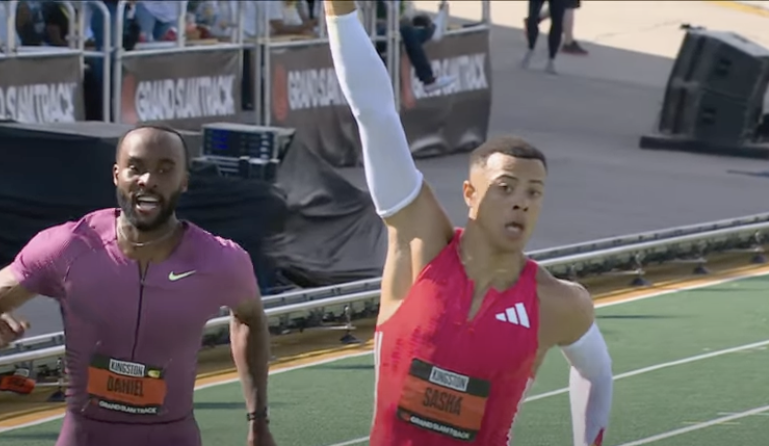The inaugural Grand Slam Track League in Kingston, Jamaica has left fans much to talk about because they loved it and want more.
This novel idea, brainchild of former World record holder Michael Johnson, has reshaped the thinking and expectations of grass-root fans and has revolutionized the sport in several ways, from big financial incentives for athletes to emphasis on entertainment and fan engagement to the challenging of the status quo of major athletics organizations.
Substantial Financial Rewards
The substantial financial rewards offered to athletes was a major departure from traditional meets. With a big budget in place, every competitor was guaranteed a minimum of US$12,000 (10k appearance fee plus $US2k minimum prize money).
This guaranteed payment, coupled with the potential for significantly larger prizes, including US$100,000 for the overall slam champions, established a new benchmark for athlete compensation and could influence how athletes prioritize competitions. One athlete even stated that he earned more in this single weekend than in their entire career, despite being a World Championship medalist.
The event prioritized a high-quality production and aimed to create an engaging experience for fans. This included aspects such as impressive athlete introductions on screen and in-stadium fan engagement activities in the form of trivia and prize giveaways. The focus extended beyond just the races to create a more holistic entertainment product, prompting comparisons to other major sports leagues.
New Strategic Dimension
Unlike traditional early season meets in which athletes might feel pressure to achieve fast times to qualify or prepare for major championships, Grand Slam Track emphasized placing and entertaining the crowd. This reduces the pressure for athletes to be in peak form early in the season and allowed them to compete strategically.
In addition, the League introduced a novel format with athletes competing across multiple events within their categories to accumulate points and be crowned overall “slam champions”. This point system and the concept of an overall championship added a new strategic dimension to track and field, encouraging participation in multiple events, and rewarding consistent high performance throughout the meet.
Grand Slam Track made a conscious effort to involve major athletes of yesteryear, allowing them to interact with fans and share the sport’s history. This addressed a perceived gap in how the sport typically engages with its past champions, contrasting it with others such as the NBA in the US, where retired stars maintain a visible presence. On hand were Justin Gatlin (US), Asafa Powell and Veronica Campbell-Brown (Jamaica) of the 2000s. Americans Gwen Torrence and Valerie Brisco-Hooks from the 1980s, among others, were also a part of the experience.
Opportunity for a Wider Range of Athletes
The league provided significant opportunities for “challengers” and athletes who might be overlooked in other major competitions to compete against top names and earn substantial prize money. The success of several such athletes highlighted the potential for Grand Slam to create new stars and offer unexpected results.
At the end of it, the success of Grand Slam, despite being a new venture, prompted comparisons with established bodies such as World Athletics, the Olympics, and the Diamond League. In addition, it has highlighted areas for consideration, among them optimizing the event schedule for local audiences, ensuring ticket prices are accessible, and potentially better integrating local culture into the event atmosphere. See Results


